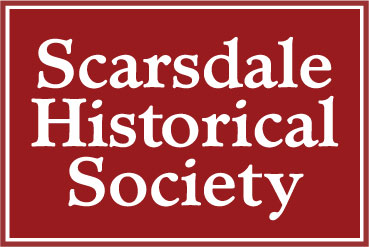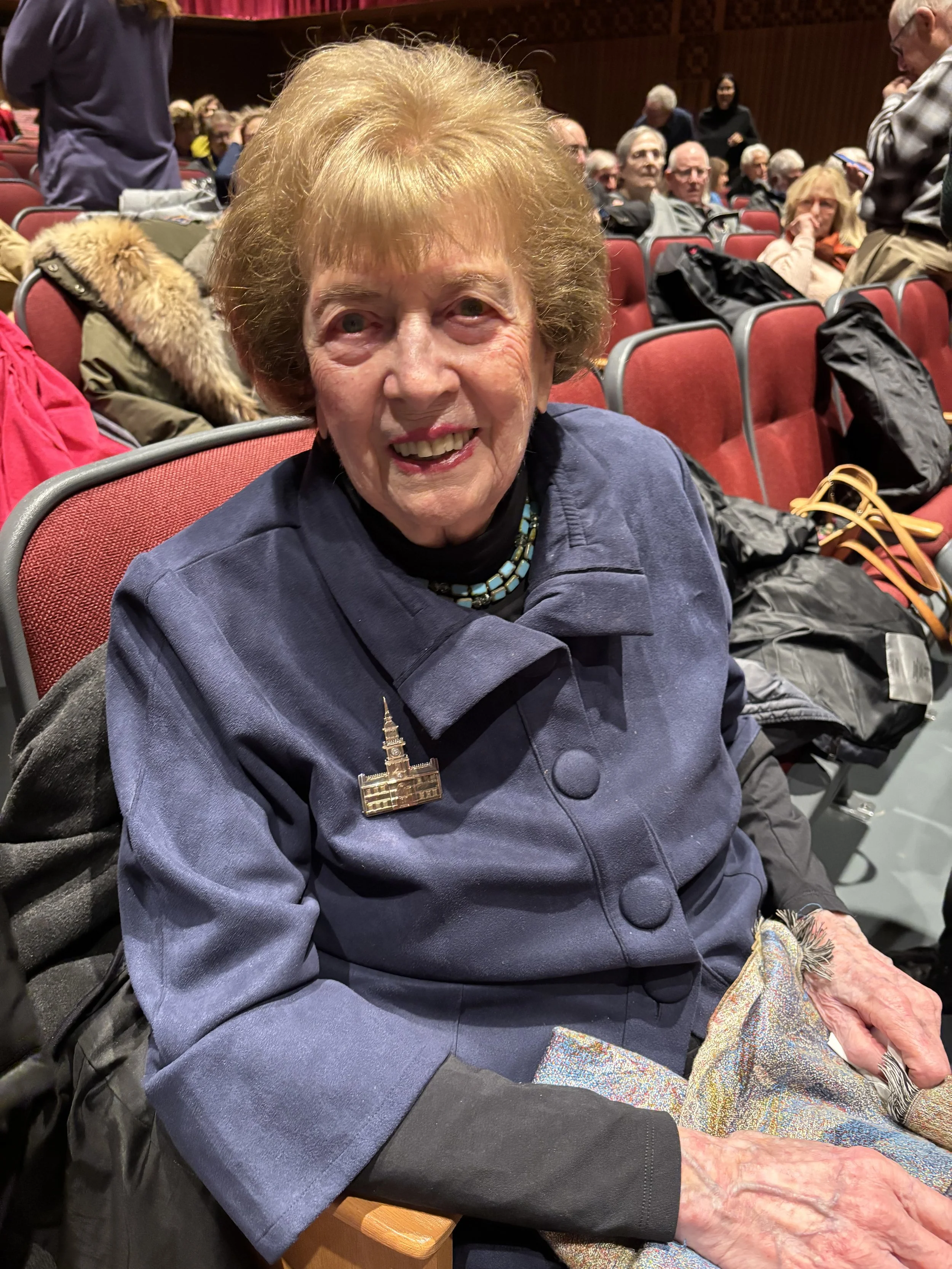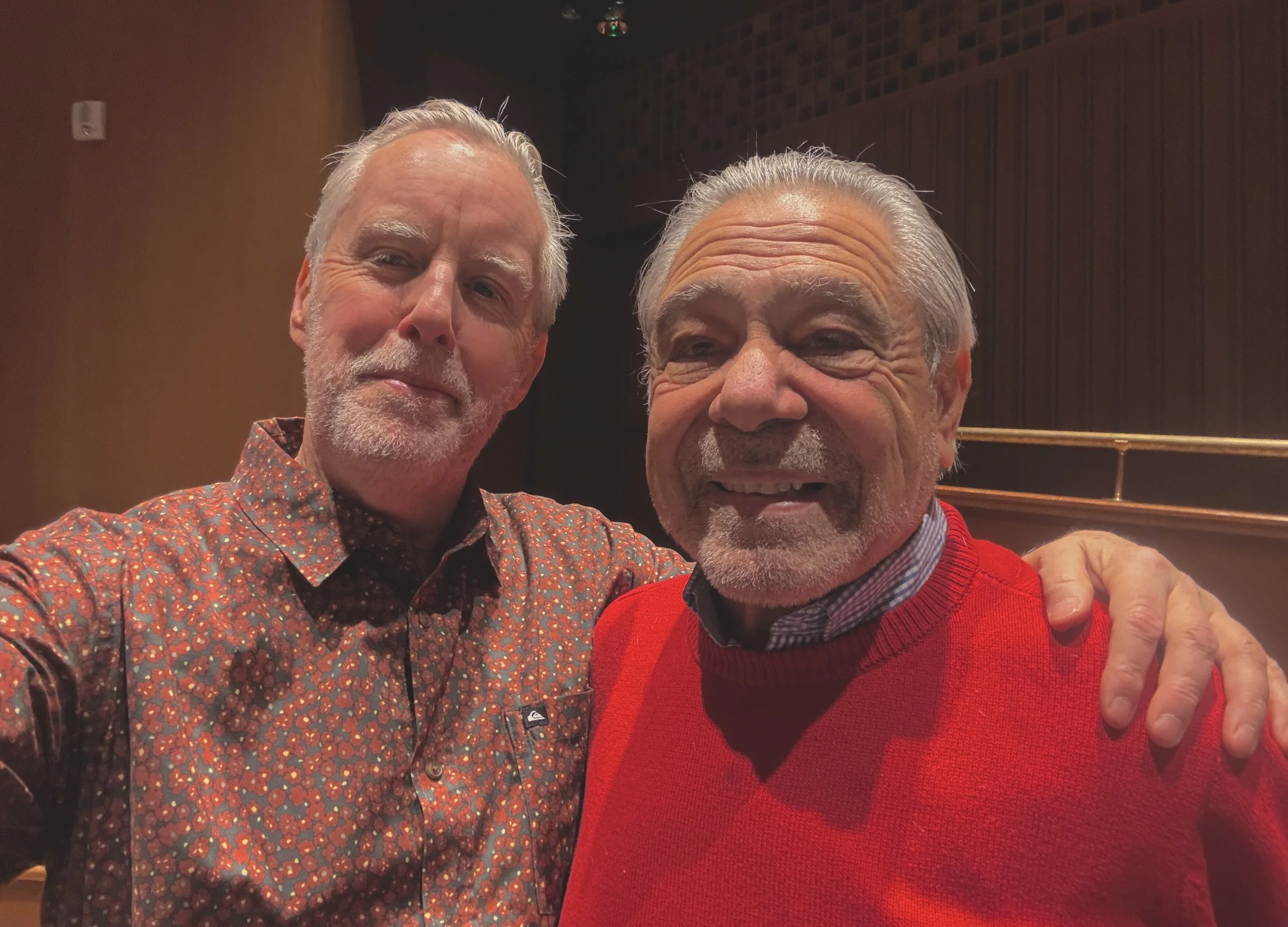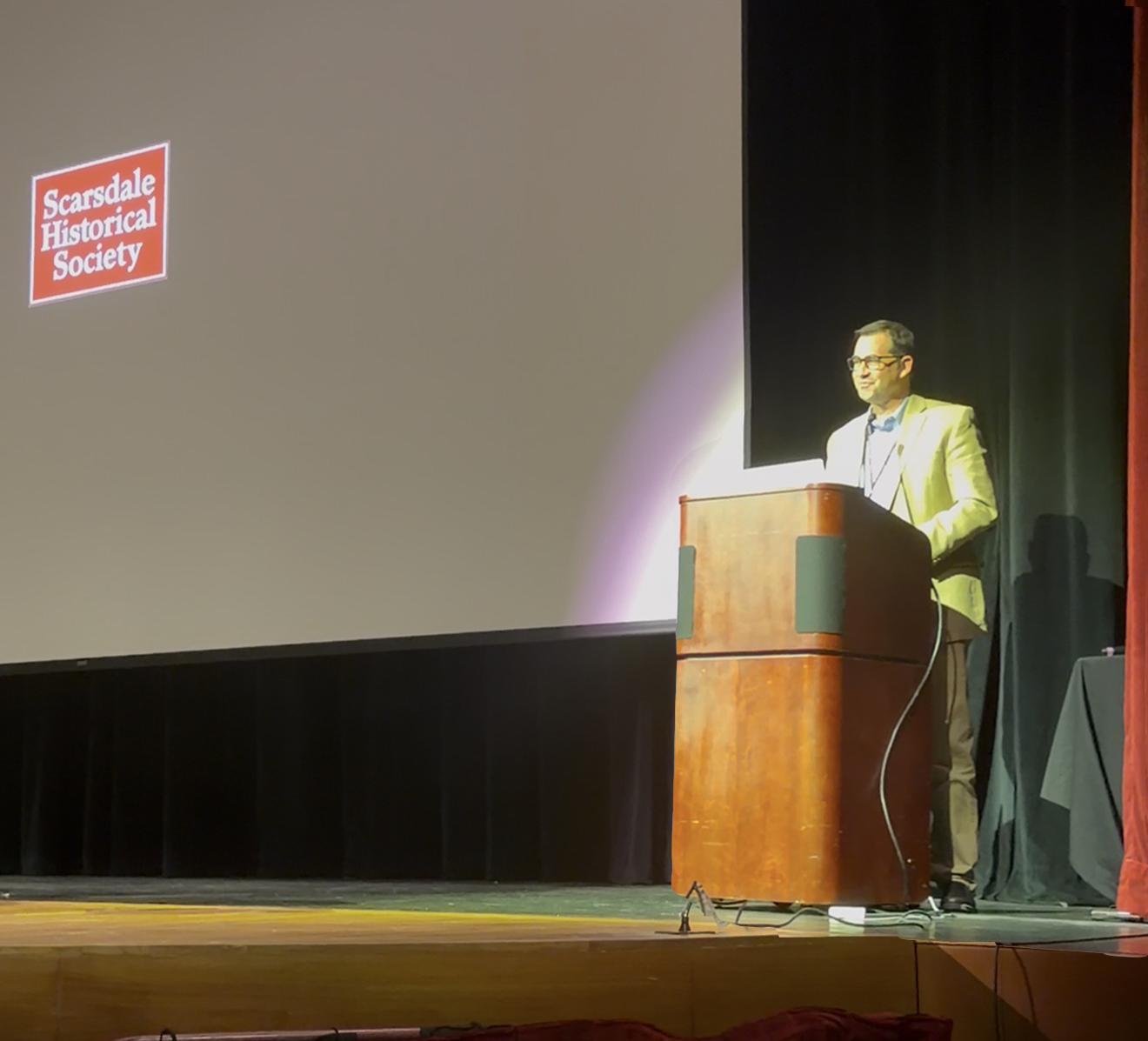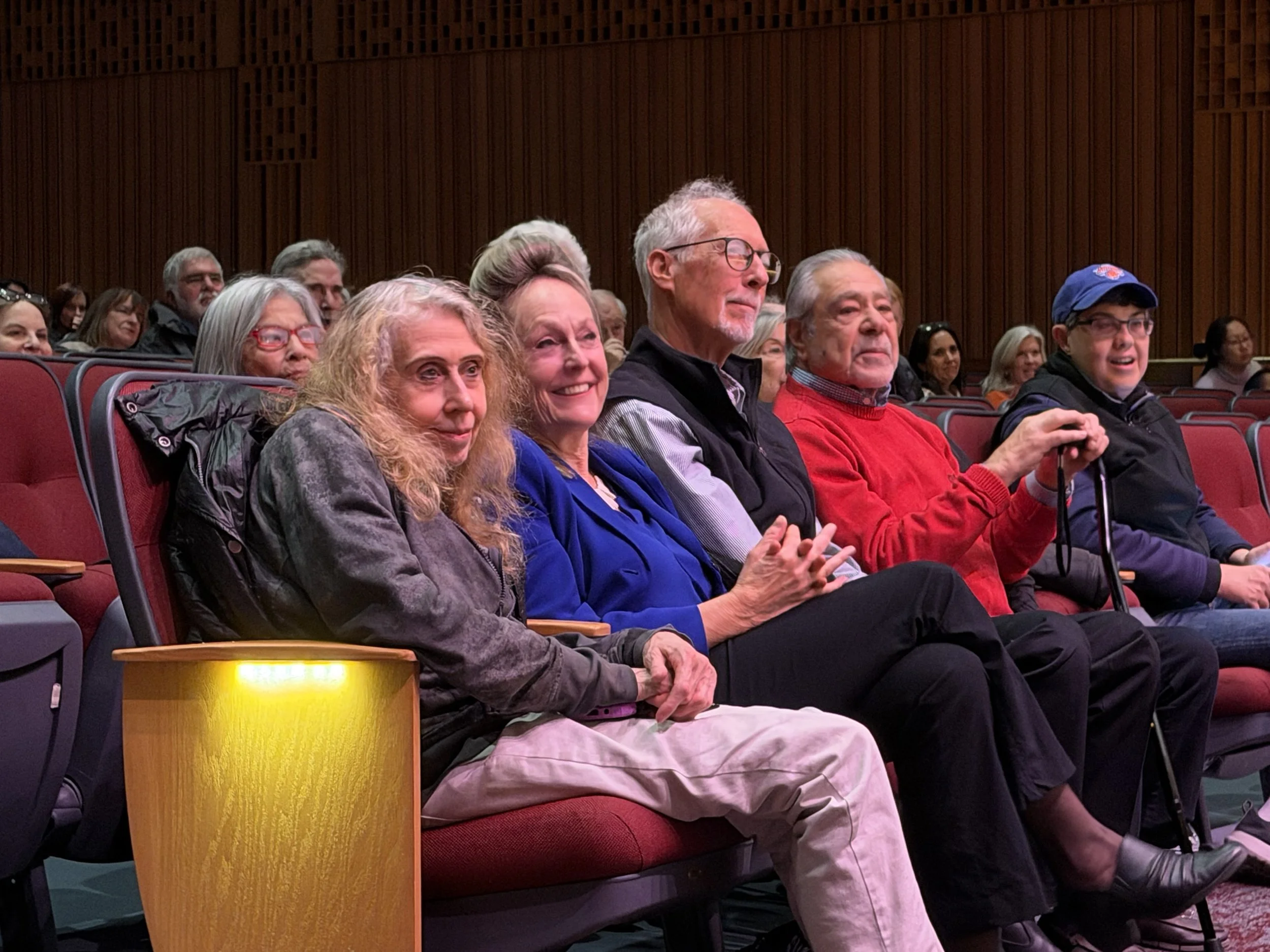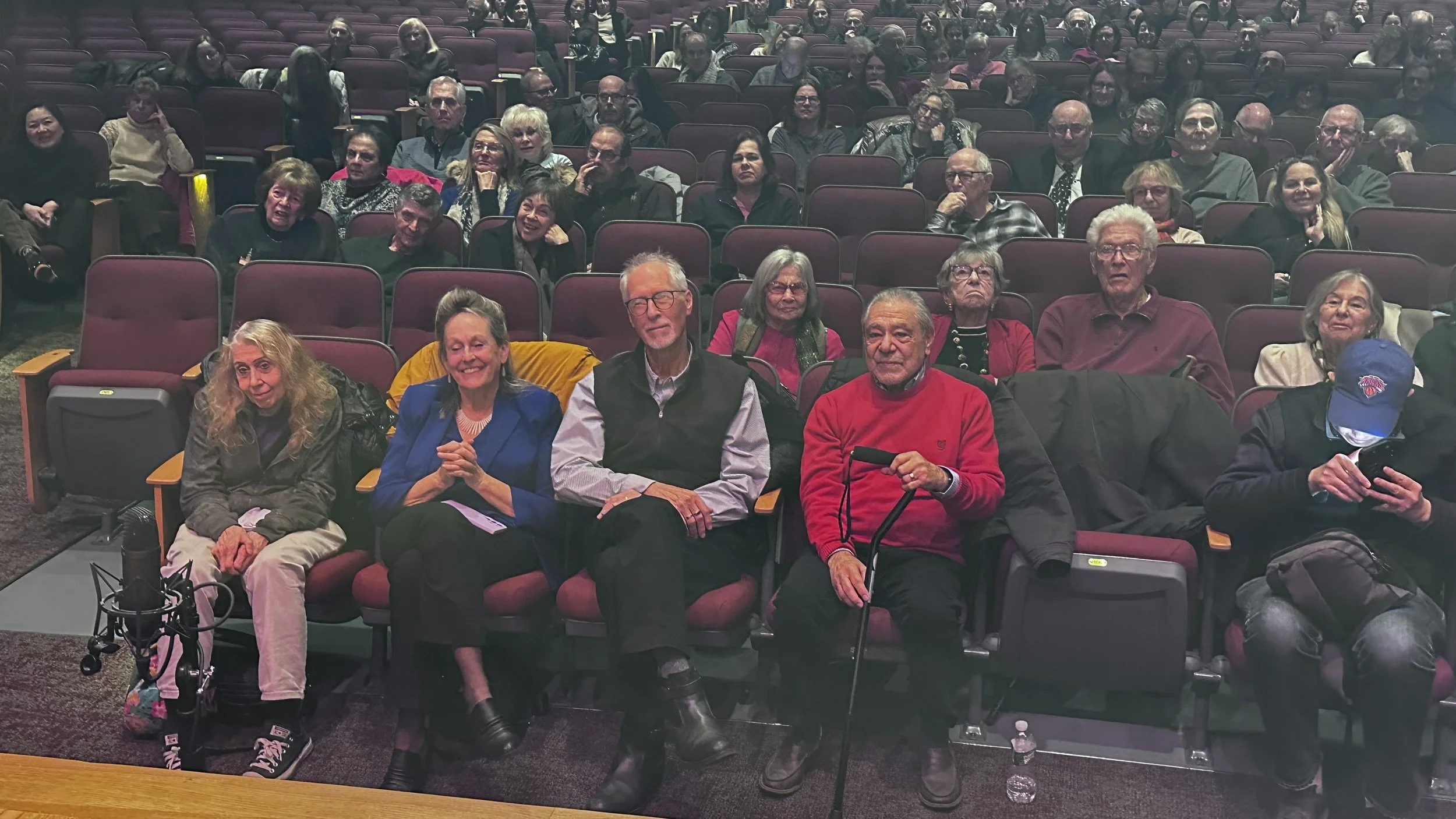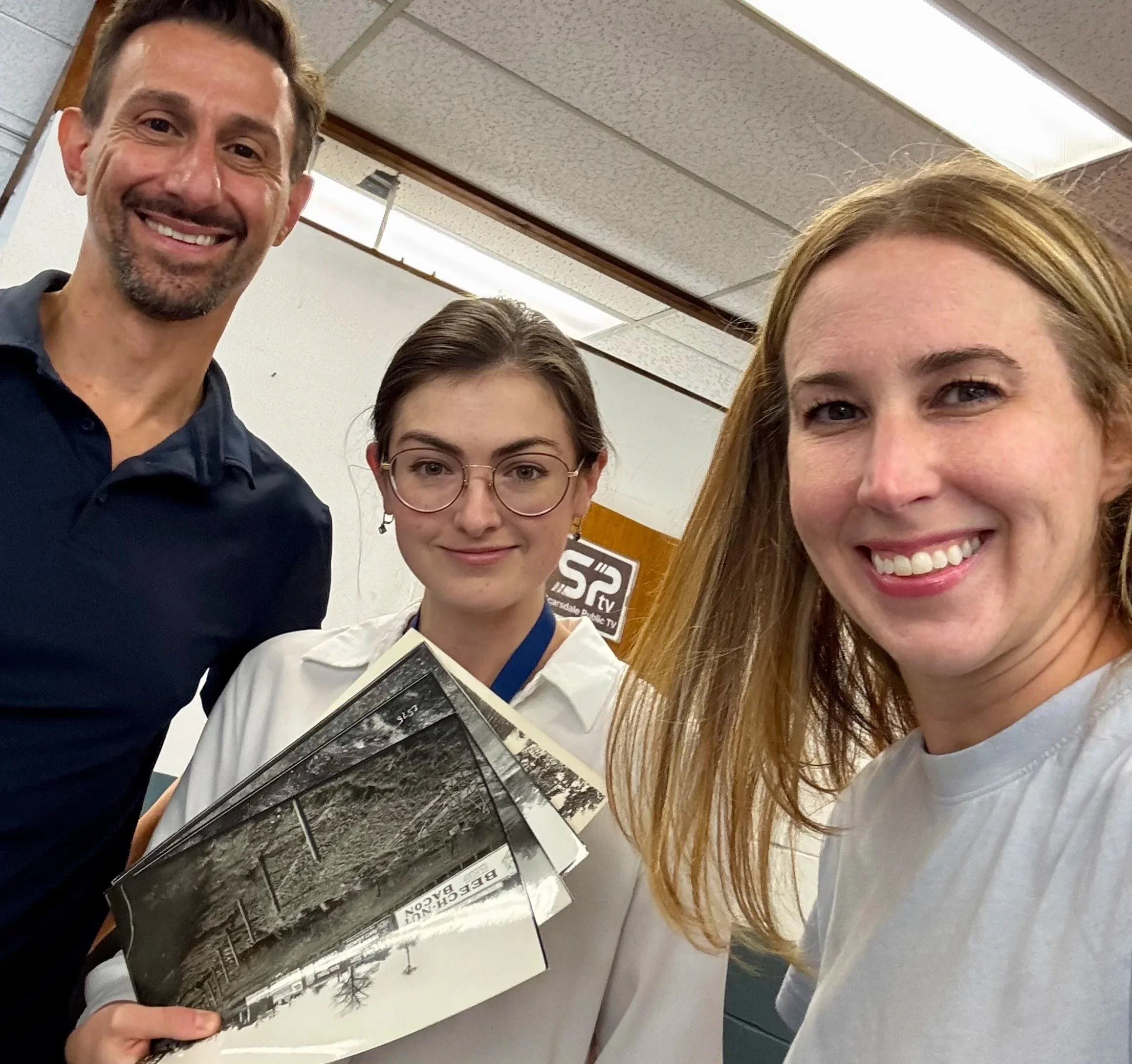School History Documentary Screening Recap – The Film Is Now Online
/The Scarsdale community really knows how to “show up.” Around 200 alumni, neighbors and friends came together for a rare opportunity to celebrate our public school district on Wednesday night at the high school auditorium. As conveyed in our new film From the First Schoolhouse: A Scarsdale Story, this community-minded spirit is what has helped the Scarsdale Schools thrive.
Left to right: William Klayer ‘73, Tony Arenella, Ruth Friendly, Scarsdale Historical Society President Randy Guggenheimer, filmmaker Lesley Topping and trustees Lori Rothman, Deidre Michael, Leslie Chang.
From a beloved centenarian educator, to a founder of the Scarsdale Alternative School, to an original Alternative School alum, we had true Scarsdale Schools legends in the high school auditorium. They are featured participants in the documentary, and here’s more background on them:
Ruth Friendly
Ruth taught at Greenacres, Heathcote, and Edgewood from the 1960s through the early 1980s. After teaching, she joined her husband Fred, the former president of CBS News and the Edward R. Murrow Professor Emeritus at Columbia University, to produce programming for the Media and Society Seminars, later known as the Fred Friendly Seminars. The programs aired nationally on PBS and explored major issues of our time. In the 2000s Ruth served for eight years on the New York State Commission of Nomination for the Court of Appeals.
Tony Arenella and William Klayer
Tony Arenella was one of the founders of the Scarsdale Alternative School (A-School), which was planned in 1970. Tony taught English, and then became the director of the A-School in 1981 until he retired in 2003. Beginning with only sixty-two students, three full-time teachers, and several part-time teachers, the early team developed the groundbreaking philosophies and structures that still shape the A-School today.
William Klayer was one of the first students to graduate from the A-School in 1973, and went on to build a distinguished career in television and film as a director and photographer. His extensive credits include 30 Rock, Suits, Law & Order, and the award-winning short film Under a Stone.
We are so grateful to the filmmaker Lesley Topping for creating this film. Through her documentaries, she skillfully preserves Scarsdale’s most important stories—and they’re all available here.
Lesley Topping
Lesley, a Scarsdale Schools alum, is the editor and director of the film. Her credits also include many short videos, feature films and television documentaries for CBS, A&E and the Cousteau Society.
Thank you to Scarsdale Public Library for the partnership and for co-sponsoring the event. Don’t miss their new exhibit on the Scarsdale Public Schools, created by the library’s Local History Librarian Dan Glauber. It’s on display in the Local History Center of the library, or online here.
We also thank Scarsdale Public Schools Superintendent Drew Patrick for his support throughout the production of this film. His opening remarks added a moment of extra distinction to the event.
Scarsdale Public Schools Superintendent Drew Patrick introduced the film.
The audience was very engaged during the Q&A Session, especially all of the alumni that shared stories from their school days.
At the panel discussion, left to right: Dan, Leslie, Lesley, and William. Tony and Ruth answered questions from their seats in the audience.
Scarsdale Historical Society trustees greeting attendees, from left to right: Lori, May Cowan, Lesley Shearer, and Leslie
The event drew a crowd of all ages, and alumni enjoyed seeing the newly renovated auditorium.
